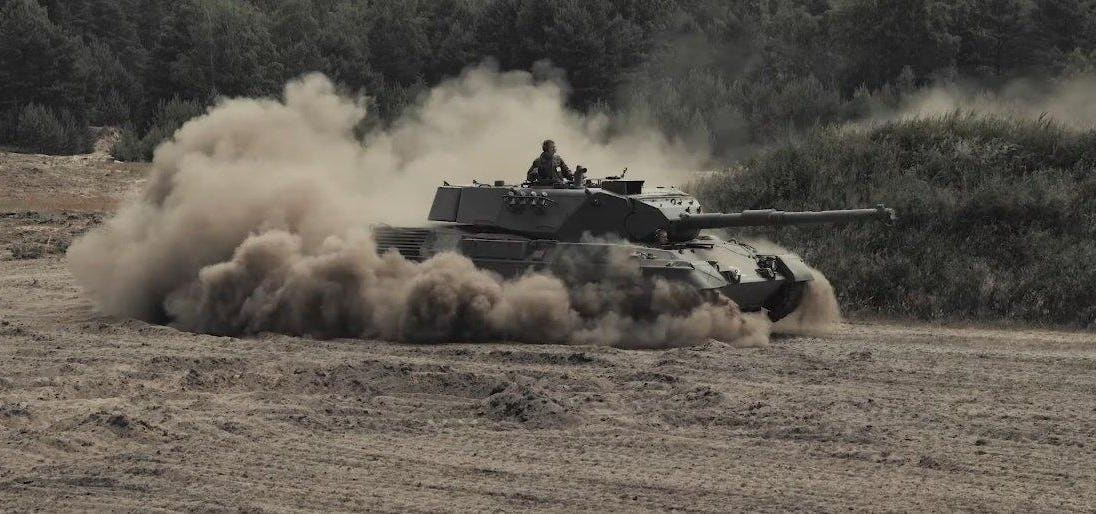It’s one thing to pledge a bunch of surplus tanks to the Ukrainian war effort. It’s another actually to get the old tanks into working order and train crews to operate them—especially after the tanks have been in storage for 19 years.
The Danish government learned that lesson the hard way after a consortium of Denmark, Germany and The Netherlands—and later Belgium—in February announced it would donate to Ukraine an initial hundred or so 1980s-vintage Leopard 1A5 tanks. Over the next six months the pledge swelled to as many as 178 tanks.
That’s a lot of tanks: as many as five battalions’ worth. And as each Leopard has a crew of four, they require a lot of tankers. Training nearly a thousand tankers demanded a crash effort by Denmark and Germany. A crash effort that needed the help of a few museums.
With the consortium so far having delivered just 10 Leopard 1A5s, the training is ongoing—and could continue through 2024 as Kyiv’s allies fulfill their tank pledge and train any replacement crews the Ukrainian armed forces require.
The Danish army was the most recent Leopard 1A5 operator. It retired its last Leopard 1 back in 2005, ultimately replacing the type with the heavier Leopard 2. There are still some aging former Leopard 1A5 crew members in the Danish army’s sole armored unit, the Jutland Dragoon Regiment.
These craggy Danish veterans formed the training cadre and, reinforced by some retired Danish tankers who volunteered to return to government service, set up shop at the Klietz training ground west of Berlin. They were joined by German instructors who had experience on German army engineering vehicles, which share the Leopard 1’s chassis.
The Ukrainian trainees began arriving in May. According to a Danish military release, the Danes assumed responsibility for the first phase of their training—the basic stuff. The Germans took over for the second phase. Translators and contractors from German industry assist both phases.
The training is short: just six weeks. By contrast, the Danes train their own tankers over a two-month program. It helps that many of the Ukrainians are hardened veterans of Russia’s 19-month wider war on Ukraine: they already know how to fight in a tank. “There is no reason for us to tell them something they already know,” one Danish instructor said.
Having hired instructors, the consortium also needed vehicles for the trainees to practice on. While the Germans have made use of their turretless training vehicles—which previously trained drivers of engineering vehicles—the final stages of instruction, including gunnery, require combat-capable tanks.
Again, the Leopard 1A5’s age posed a problem. Most of the tanks actually belonged to German firm Flensburger Fahrzeugbau Gesellschaft—and had been sitting in a warehouse for two decades. They needed refurbishment.
But the training wouldn’t wait. “It is clear that we do not have that much time, because it is important that they [the tankers] come back to Ukraine and can help their comrades in the defense of Ukraine,” said Maj. Kim Fonseca, chief of staff of the Danish army’s armored battalion.
So the consortium asked for help … from Danish museums. Apparently the handful of Leopard 1A5s on display in museums were in better condition than were the nearly 100 in storage. Three museums lent the consortium six working tanks “so that the training of the Ukrainians could begin immediately,” the Danish military stated.
Four months later, workers at German tank-maker Rheinmetall are turning over refurbished—practically new-looking—Leopard 1A5s at an accelerating rate. Ten are in Ukraine, while others have joined the museum tanks in Klietz in order to bolster the training effort.
How long the training program continues depends on how long the war continues—and how many more old Leopard 1s Ukraine’s allies can recover from some private company’s warehouses, or from the one NATO country that still operates the tanks. Greece.
Read the full article here





